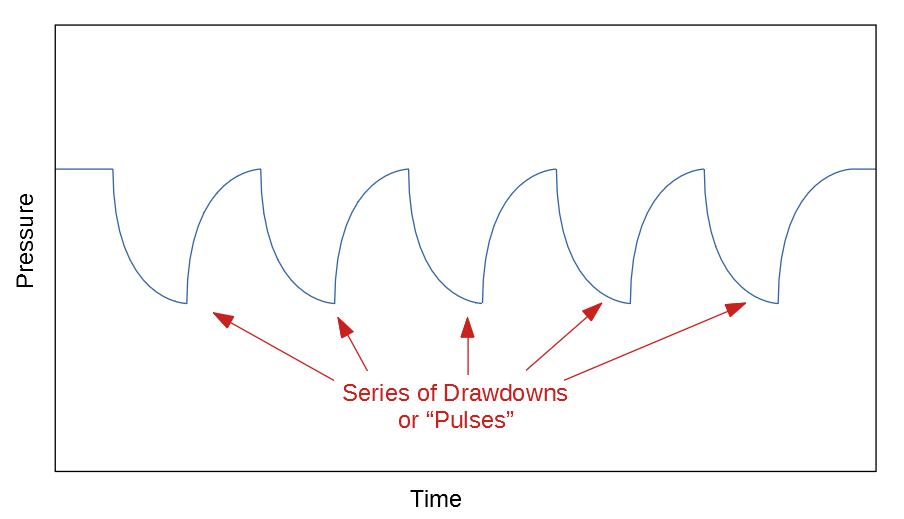Want to read more? Click here for more Well Insights.
AN INTRODUCTION TO INTERFERENCE TESTING
An interference test is a type of pressure transient test that measures the connectivity between two or more wells in the same reservoir. This is done by creating pressure transients in an active well, by either flowing or injecting into that well. Some time later, those same pressure transients will arrive at an observation well. The time and magnitude of the pressure transients at the observation well can be used to calculate critical reservoir parameters and refine reservoir models.
Applications For Interference Testing
An interference test is performed by identifying one active well, and one or more observation wells. Bottomhole pressure gauges are run into each well. All wells must be shut in and allowed to reach full buildup pressure before the test can begin. Once the field is stabilized, a pressure transient is created at the active well, either by producing or injecting into this well. Some time later (days, weeks or months depending on the reservoir) that same pressure transient will arrive at the observation wells and can be seen on the pressure data. The travel time and magnitude of the pressure transient at the observation wells can then be used to determine the average permeability and porosity.
Permeability and porosity can be calculated with the following equations:
It should be noted that if reservoir anisotropy is to be determined, it is necessary to have multiple observation wells.
Pressure transients move outward from the active well and eventually reach the observation well
Pulse Tests
One of the major limitations of interference testing is noise within the reservoir. This can be an issue in developed fields that include many wells. Pressure transients from other wells not included in the test can create conflicting data at the observation wells that make the analysis difficult and can lead to inaccuracies. Traditionally, the way to deal with this is to shut in the entire field to eliminate this noise, however, this can be costly and often impractical. A more practical approach is to use a pulse test.
A pulse test is a modification to interference testing, and it works by creating a series of easily identifiable pressure transients that cannot be mistaken. An example of this might be to create five 1-hour pressure drawdowns, each followed by a 1-hour pressure buildup. When these five pulses arrive at an observation well, it will be very easy to identify, even in the presence of other reservoir noise. The main advantage of this method is that it does not require other wells in the field to be shut in.
A pressure pulse sequence created at the active well will be easy to identify at the observation wells
Summary
Interference tests are a great way to gain insight into the unknown parts of your reservoir and provide a level of detail that a single-well buildup test cannot. This insight can allow you to refine your reservoir models and make them much more accurate. Interference tests are much more complex than simple single-well buildup tests and therefore require some strategic planning in order to get the best results.
If you are interested in learning about how you can use an interference test to gain more insight into your reservoir, reach out to us.
YOU’RE WELL HAS A STORY TO TELL…ARE YOU LISTENING?
Want to read more? Click here for more Well Insights.
You can also subscribe to receive Well Insights updates directly to your inbox.




